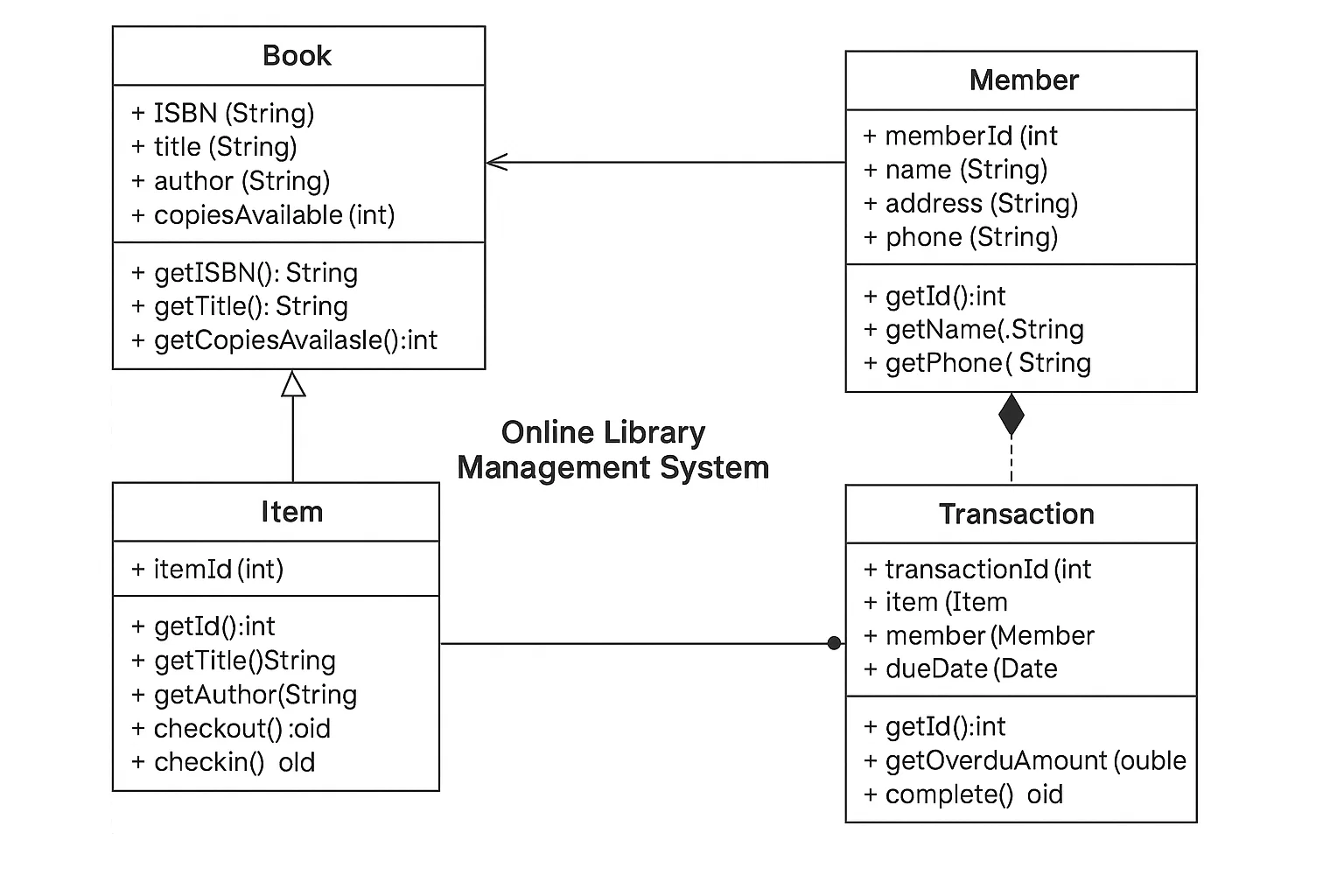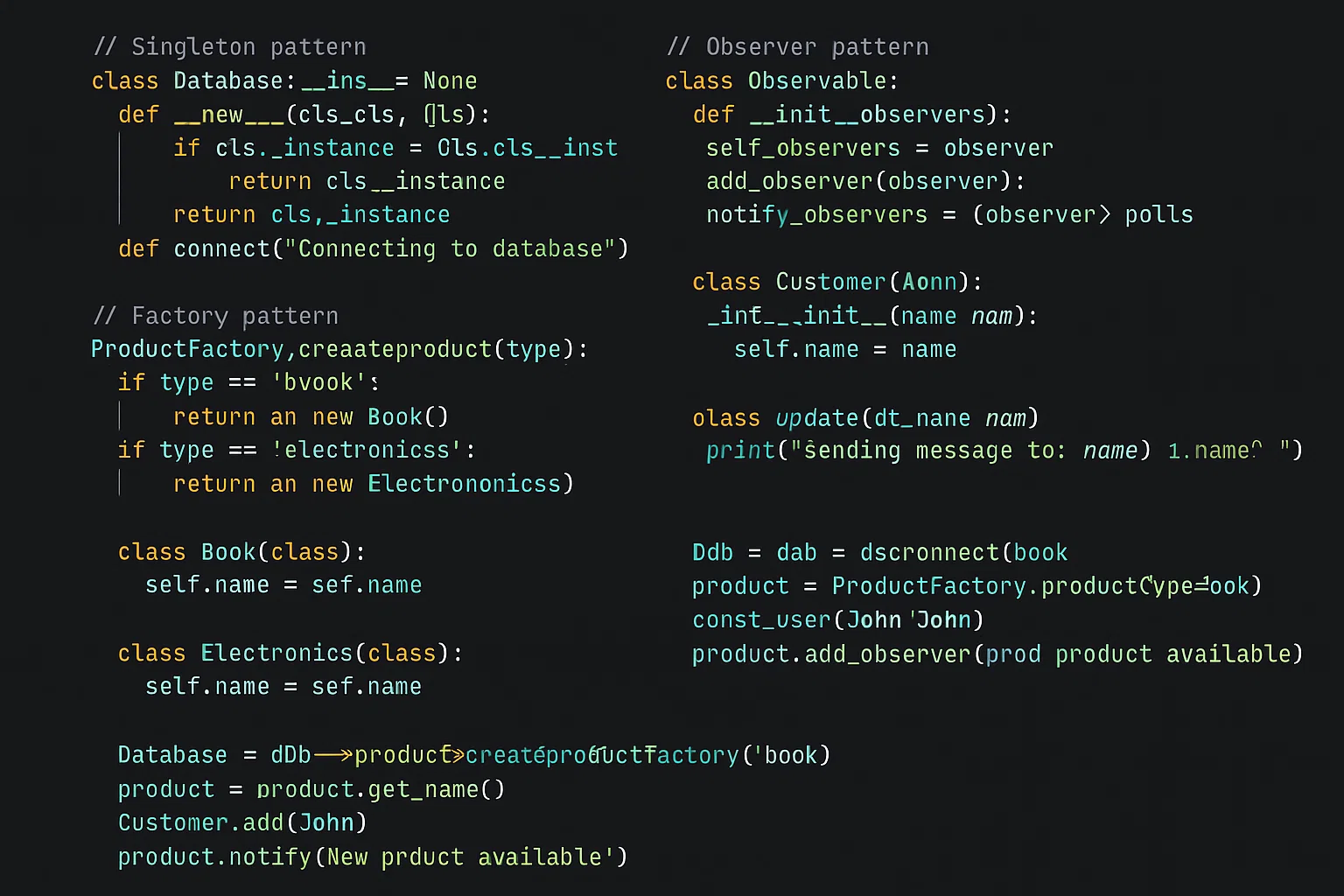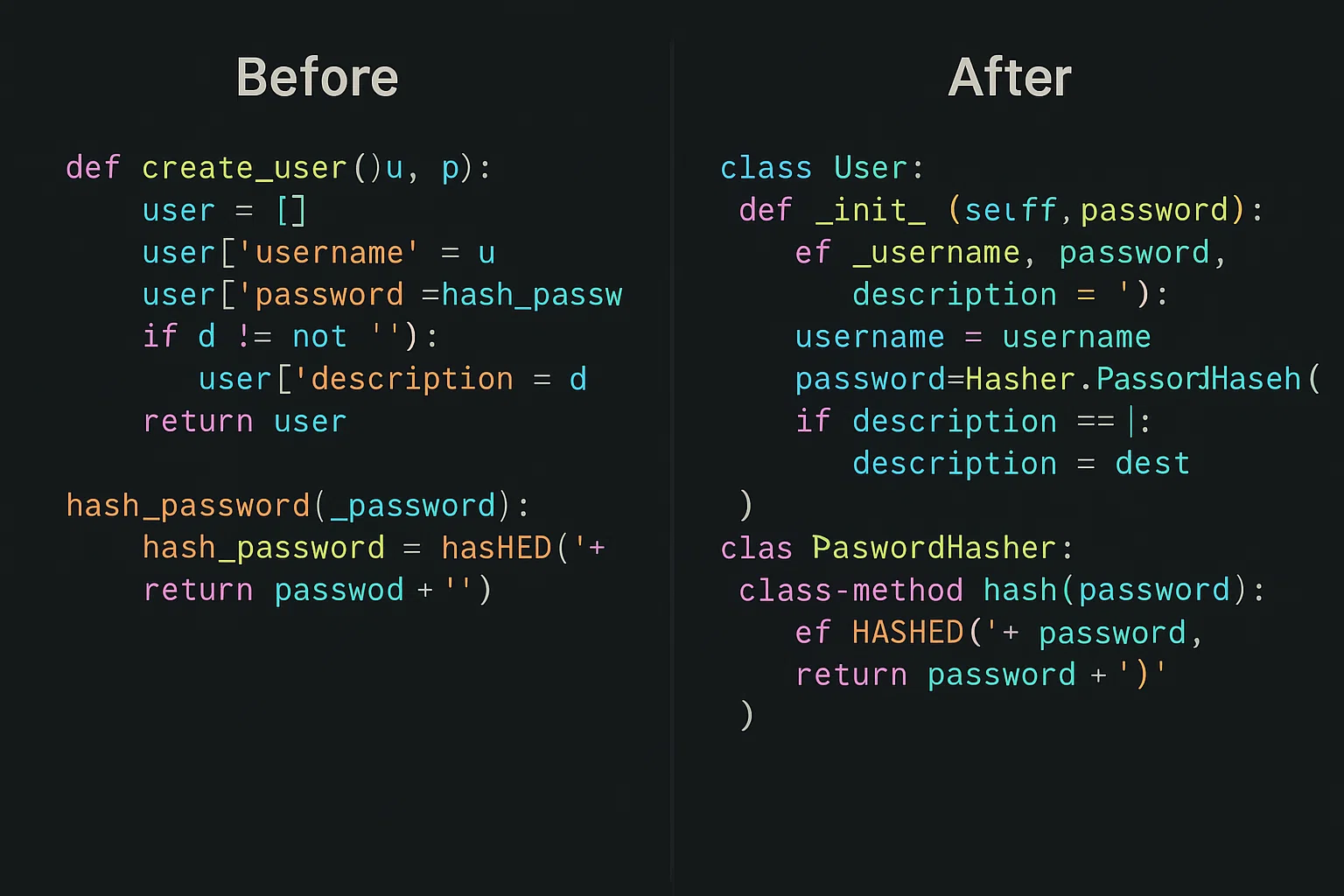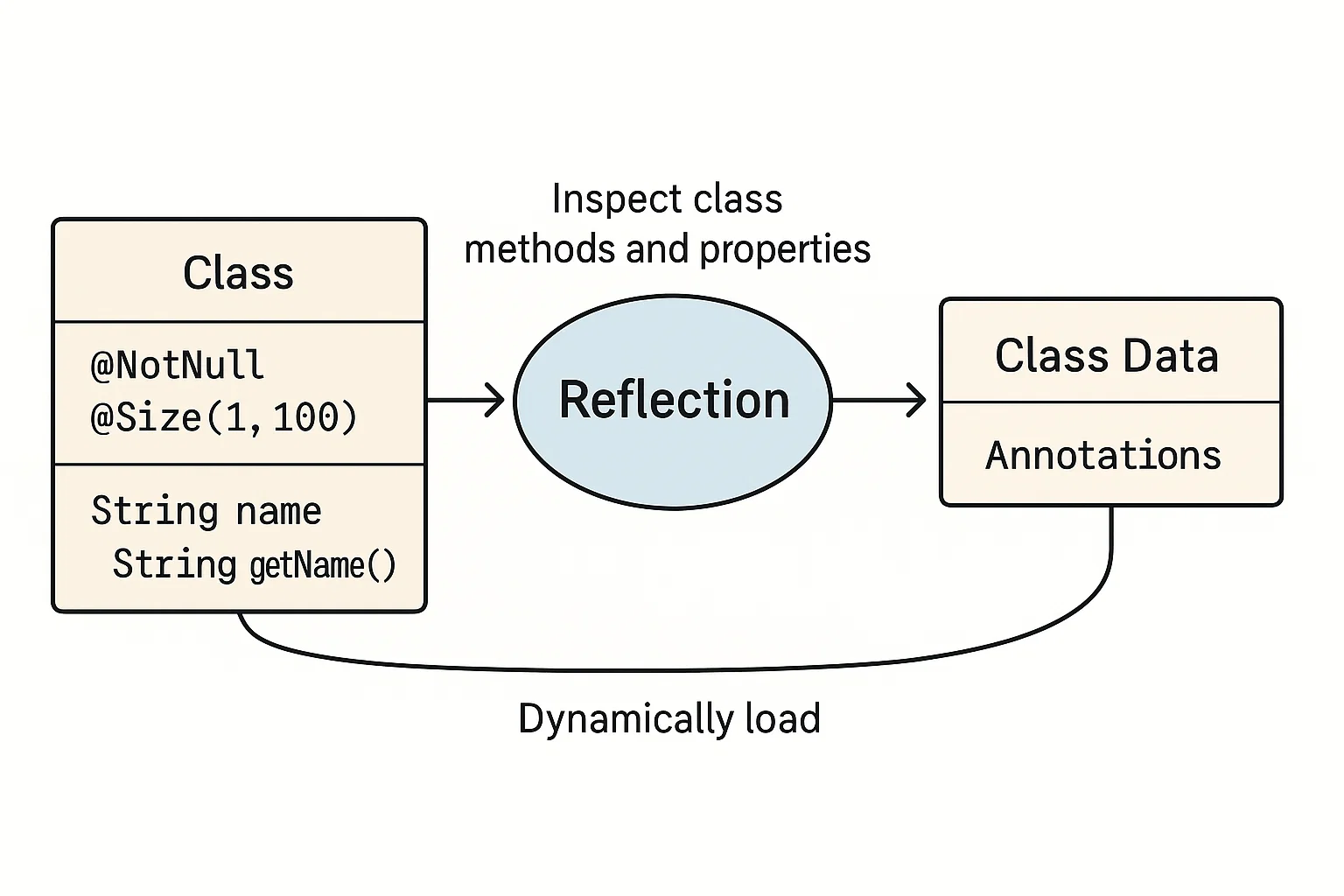Expert Assignment Solutions with 100% Guaranteed Success
Get Guaranteed success with our Top Notch Qualified Team ! Our Experts provide clear, step-by-step solutions and personalized tutoring to make sure you pass every course with good grades. We’re here for you 24/7, making sure you get desired results !
We Are The Most Trusted
Helping Students Ace Their Assignments & Exams with 100% Guaranteed Results
Featured Assignments

Object-Oriented Design and UML Diagrams
Object-Oriented Programming (OOP)Client Requirements
The student needed to demonstrate a deep understanding of object-oriented design principles by designing a system using Object-Oriented Programming (OOP) concepts. The assignment required them to create a fully-functional system, such as an online library management system or a simple e-commerce platform, with detailed UML (Unified Modeling Language) diagrams that represent the classes, objects, and relationships between them.
Challenges Faced
We faced some complications handling the complexity of translating real-world systems into OOP designs. Ensuring that students properly modeled interactions between classes and implemented appropriate inheritance, polymorphism, and encapsulation was challenging. Additionally, some students had difficulty maintaining system coherence between their UML diagrams and actual code.
Our Solution
We implemented a structured approach where students were given clear guidelines on how to develop their UML diagrams before starting the coding process. Detailed templates were provided for each type of diagram (class diagram, sequence diagram, etc.), ensuring that students first conceptualized their designs before diving into implementation. We also conducted several review sessions to clarify any doubts regarding OOP principles and UML standards.
Results Achieved
Students successfully created well-structured UML diagrams and implemented systems that adhered to OOP principles. Their code demonstrated strong usage of inheritance, polymorphism, and encapsulation, while their UML diagrams clearly reflected these relationships. This assignment helped them grasp how design decisions in OOP translate to real-world applications.
Client Review
My experience working on this assignment was outstanding. The structured approach helped me design the system efficiently, and the UML diagrams were an excellent tool to visualize the project. I was particularly impressed with how smoothly the transition from design to implementation went. The guidance was clear, and the results spoke for themselves. Everything worked seamlessly, and I felt fully supported throughout the assignment.

Implementing Design Patterns
Software Design PatternsClient Requirements
The student wanted to learn about design patterns and apply them to a real-world problem. They were tasked with implementing at least three design patterns, such as Singleton, Factory, and Observer, within a project like a ticket booking system or a stock market monitoring app. The goal was to showcase how design patterns can solve common problems in software development.
Challenges Faced
We encountered challenges ensuring that students applied design patterns effectively without overcomplicating their solutions. Some students initially struggled with identifying the appropriate pattern for the given scenario and often misunderstood how to properly integrate the design patterns into their code.
Our Solution
We provided a thorough walkthrough of each design pattern with examples, followed by case studies where students could analyze real-world use cases. We also gave them smaller exercises to practice implementing each pattern before integrating them into a larger system. Additionally, regular feedback was provided during the development phase to ensure that students applied the patterns correctly.
Results Achieved
Students successfully implemented the design patterns, demonstrating how each pattern could address specific problems in their project. The systems they developed were more maintainable and scalable, showcasing the power of design patterns in OOP. Their ability to correctly identify and apply the right design pattern to solve real-world challenges was commendable.
Client Review
I had a fantastic experience with this assignment. The practical application of design patterns in my project made everything click. The examples provided were clear, and the small exercises helped me practice the concepts before using them in my final project. The guidance and feedback were timely and incredibly helpful, and the final result was highly satisfying. I feel much more confident using design patterns now.

OOP Principles and Refactoring Code
Object-Oriented Programming (OOP)Client Requirements
The student needed to demonstrate their ability to refactor a legacy codebase that lacked proper object-oriented structure. The task was to identify areas where the code violated OOP principles, such as improper use of inheritance, low cohesion, or lack of encapsulation, and refactor it to improve readability, maintainability, and performance.
Challenges Faced
We ensured that students didn't just focus on making superficial changes but addressed the core issues within the code. Some students found it difficult to identify areas for improvement, and others struggled with how to refactor the code without changing its functionality.
Our Solution
We implemented a step-by-step approach, first helping students understand the importance of clean code and OOP principles. They were asked to read through the code, identify potential issues like code duplication, improper class design, and weak encapsulation, and then apply best practices to refactor it. We also provided tools and frameworks to help automate some of the more tedious refactoring tasks.
Results Achieved
The students successfully refactored their code, improving its design and structure. They demonstrated a strong understanding of OOP principles by implementing appropriate refactoring techniques, such as breaking down large classes into smaller ones, enhancing encapsulation, and improving method signatures. Their final code was significantly more maintainable, modular, and easier to understand.
Client Review
My experience with this assignment was exceptional. The process of refactoring legacy code really helped me understand the importance of clean, maintainable code. The guidance provided helped me identify and fix issues I wouldn't have spotted on my own. The changes I made to the code improved its structure and readability dramatically. It was a highly rewarding exercise.

Advanced OOP Concepts - Reflection and Annotations
Advanced Object-Oriented ProgrammingClient Requirements
The student needed to explore advanced OOP concepts such as reflection and annotations in Java or C#. They were tasked with creating a dynamic system that uses reflection to inspect classes and methods at runtime, combined with custom annotations to provide metadata or validation rules. For example, creating a system that dynamically loads and validates user input forms based on annotated classes.
Challenges Faced
We faced some challenges ensuring that students properly understood the purpose and applications of reflection and annotations. Many struggled with the dynamic aspects of reflection and how to effectively implement annotations for runtime processing. Ensuring performance optimization in reflection-heavy tasks was also a hurdle.
Our Solution
We provided examples and use cases demonstrating how reflection and annotations work in real-world applications. Students were first given smaller tasks to practice using reflection to inspect class structures, followed by exercises on defining and using custom annotations. We also emphasized performance considerations when using reflection in production systems.
Results Achieved
Students successfully created systems that utilized reflection and annotations for dynamic behavior. They demonstrated their understanding by building systems that could adapt to changes in class structures at runtime, and their implementations showcased how annotations could be used to enforce validation rules in a scalable manner.
Client Review
My experience with this assignment was fantastic. The use of reflection and annotations was an eye-opening experience, and I feel like I’ve gained a deeper understanding of how dynamic systems work. The examples and exercises were practical and helped me apply the concepts to real-world problems. The support I received throughout was invaluable, and I’m confident in using these advanced OOP concepts in future projects.
